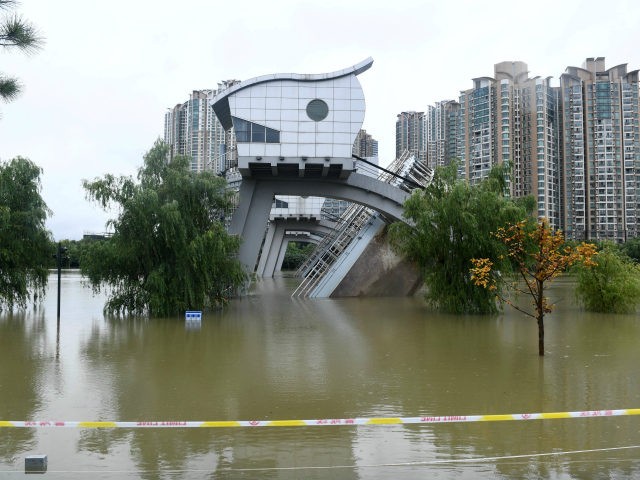A natural gas pipeline exploded in China’s north-central city of Yulin on Wednesday. Authorities blame the blast on recent flooding in the region and have issued a warning to area citizens to expect more heavy rains in the coming days.
In addition to the pipeline explosion, several roads collapsed this week because of flooding in and around Yulin, located in China’s Shaanxi province. No casualties have been reported in connection with the pipeline blast, but regional authorities have evacuated roughly 600 people from the Yulin area as a result of the infrastructure damage caused by the explosion and road collapses, the South China Morning Post reported Wednesday.
“It happened at around 1:40 AM. We were sleeping,” local resident Ma Yongping told the state-controlled broadcaster, China Central Television (CCTV), of the pipeline explosion.
“We were woken up by the blast, which was so loud. I went out to check what happened. When I stepped out of my home, I realized it was a natural gas pipeline that exploded,” Ma said.
Yulin borders China’s Inner Mongolia Autonomous Region to the north, which in recent months has suffered from severe droughts; approximately 45 percent of the region was affected as of June. In China’s south and interior, torrential rains have caused historic flooding in recent weeks. The overnight transition from one climate extreme to another proved too much for Yulin this week, whose faulty infrastructure was poorly equipped to withstand the flooding.
Typhoon Hagupit made landfall in east China on Tuesday, further complicating the environmental crisis. Since early June, torrential rains in southern China have flooded the middle and lower reaches of the Yangtze River, one of the world’s largest. As of mid-July, 433 Yangtze tributaries were flooded. An estimated 55 million people living in communities along the Yangtze’s nearly 4,000-mile path have been affected by the flooding, and at least 56 people have died.
China’s Three Gorges Dam, the largest hydroelectric plant in the world, is located on the Yangtze. The dam is at risk of collapsing because of the extreme flooding and has “moved, leaked, and distorted,” Chinese state media reported in late July. The admission was a rare instance of Beijing revealing the extent of the flooding’s damage, as it has otherwise insisted that the floods are under control and that the dam’s structure was sound.
In an effort to relieve pressure on the strained dam, Chinese officials have been opening the Three Gorges’ floodgates, sacrificing lesser dams along the Yangtze and purposefully flooding communities located along the river.

COMMENTS
Please let us know if you're having issues with commenting.